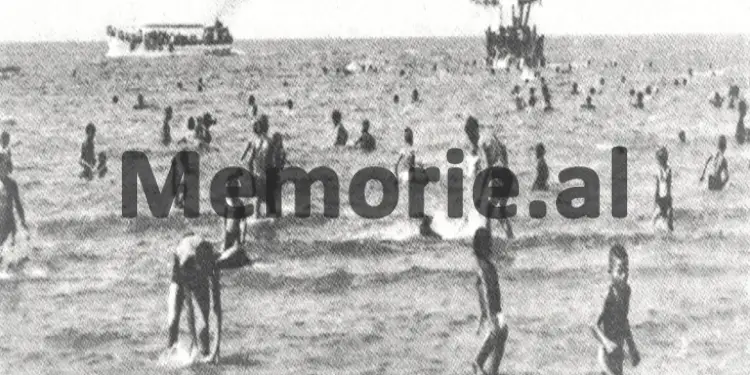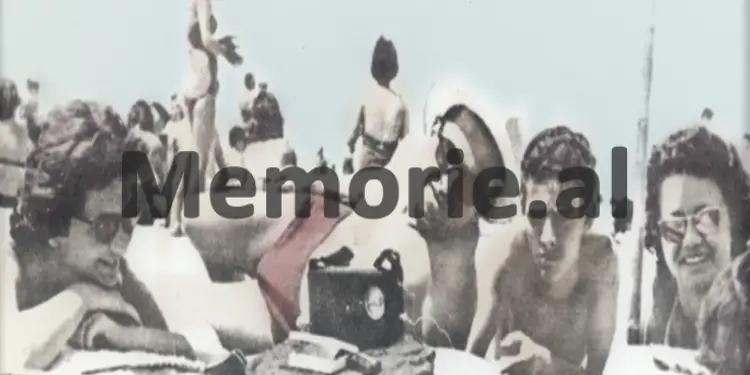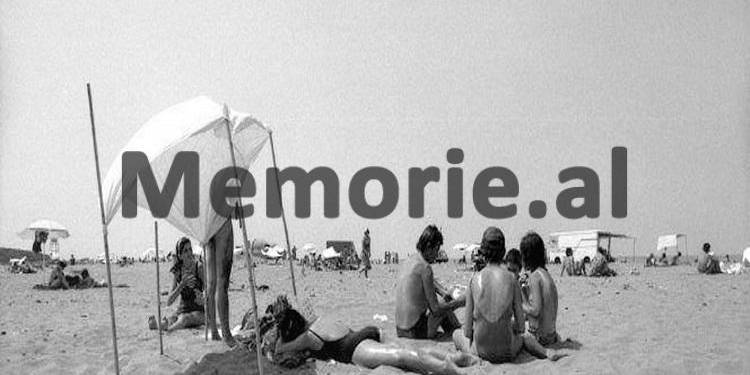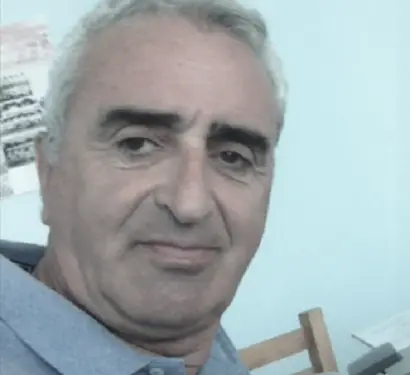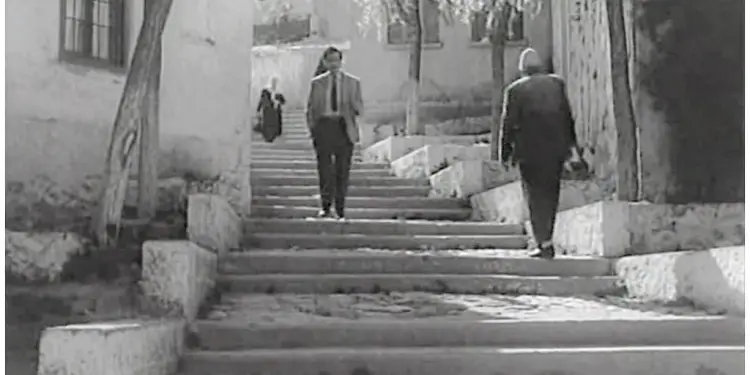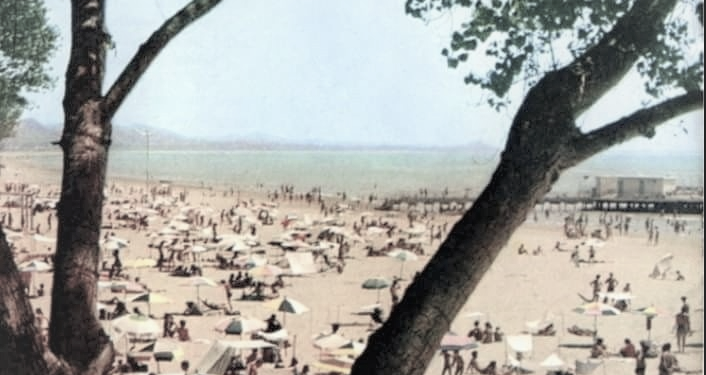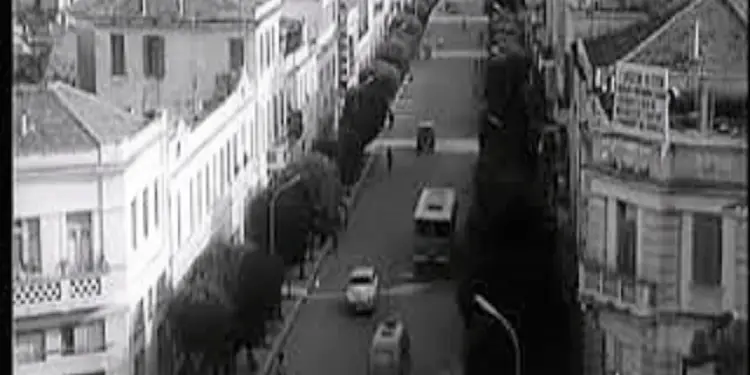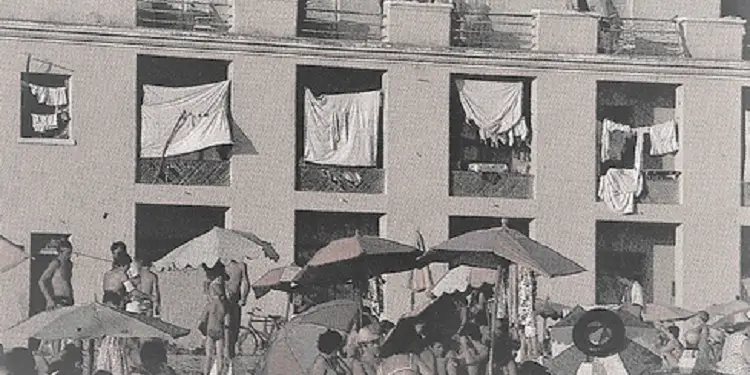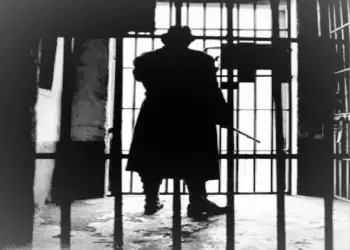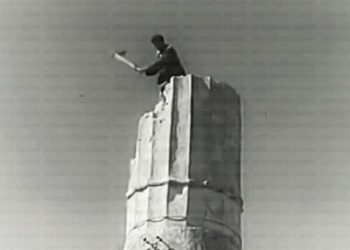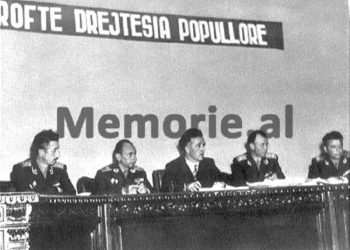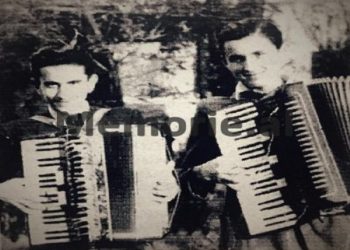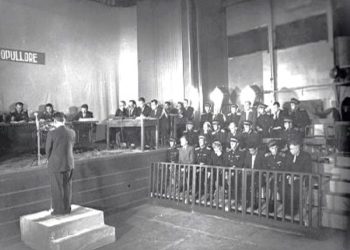From Uvil Zajmi
Memorie.al / What were the favorite beaches and how did Albanians vacation before and after the 50s, especially those who preferred the sea? Durrës, the most important one, in the three months of summer, frequented by the aristocracy, the wealthy, but also by King Zog himself. Then the period of the 1960s – 70s – 80s were special for Albanians, individuals or families who loved the sea. In those beginnings, the beaches were few and Durrës, Vlora, Saranda were the most important ones. Shengjini started to be preferred later, as well as Divjaka, while Dhërmiu, or the Ionian coast, although it was liked, was limited by the distant, difficult journey and the limited possibility for systematization.
Continues from last issue
In the first years, the center of the stop was only “Hekurudha”, where most of the capital’s beachgoers and those from Durrës were concentrated. Then followed the area called “Iliria”, “Teuta” and “Apolonia”, secondly the money with which the whole beach area started, built years later, were less preferred. The last was “Illyria”, after which came the “Block” area (of the senior leadership of the ALP), then the two rest camps or the Convalescence of the Army and the Ministry of the Interior.
Then it continued with the Camp of Pioneers and stop. The rock of Kavaja was known as a geographical name covered with pine trees and it was not even a beach. Only Golem, five km. after Shkozet, where the train stopped, was an unpopular, unknown area with few day-trippers and a few wooden cabins. The length from “Teuta” to “Iliria” was about 1.2 km., a distance that I determine, since each lighting pole with neon lamps was spaced 100 meters from each other.
See you at “Breshka”……….!
“Tek Breshka”, or let’s meet at “Breshka” – was the classic expression of the famous years, when the two-story building was at the peak of its fame. It has been for a long time the most important meeting point, stay, and attendance for everyone, but mainly for Durrsaka and Tirana. One reason was, as the closest point to the train station, another that it was the only restaurant-bar in that area. So from the sea, which was very close, directly to the restaurant or the bar, you could find a glass of beer standing or sitting, where you were allowed to enter the restaurant in swimwear, both for boys and girls. Opposite there was also a restaurant track open day and night, together with an entertainment orchestra.
However, the “Turtle” was also located near the “Adriatik” hotel, where foreign tourists came and stayed. At first, the hotel was used for foreigners, and until 1950, on its second floor, in those 7-8 rooms; Russian technicians and specialists who came for the opening of the Shkozet tunnel were accommodated. Initially, the log cabins, built by Rexhep Breshka, were preserved and used for a long time, but amortized; they were replaced or rebuilt with bricks, changing their destination: they were transformed from daily to two-week cabins.
In the southern wing, the “Breshka” Hotel was bordered by a birector and the “Adriatik” Hotel, while behind it was the “Butrinti” and “Kruja” hotels. On the north side, there was an ice cream shop next to it, while in front; there was the runway-restaurant and a small plank bridge next to it with the cabin that distributed the day boats. With the nationalization of the building, the restaurant passed to the enterprise N.T.U.S., (Trading Enterprise of Social Food), while the rooms on the second floor were no longer used as a hotel, but were given as beach rooms for officials, sportsmen, artists, families and well-known personalities of time
The “turtle” of the loves of…!
Even today, after many years and when you don’t find any trace of her, when you say “Turtle”, you immediately think of the famous bar on the beach, at “Hekurudha”. Few know the true history of this building: It was called “Turtle”, not because of its shape, not because it was named after someone, or because it symbolized something special. Not even its builder, Rexhep Çakrri, had ever thought of the fame that wise and noble animal would give him. In front of that modest two-story building, for many decades the beach season has begun and ended. Right in front of her, the most famous youth loves of that time were written.
There was fashion; there were the “VIPs” of the time, well-known people of art and sports, but also those without fame and popularity. There is no vacationer of that time who did not visit the “Turtle” once a day. The “Broduists” of Tirana were its main protagonists. It was in that bar, or the track in front of it, that worldly dances were organized when the youth of the 60s and 70s had its peak. It was in that bar, in that place, i.e. at “Breshka”, that the first sightings took place, then the legendary acquaintances and loves that today, in old age, one remembers with great nostalgia.
Track at “Turtle”
This was also very important for the time. Right in front of the “Turtle”. Its construction was carried out in two phases. First, what was there was used, and then it was built with concrete. At lunch and dinner there was the peak of the flow. Getting a table during lunch or dinner was impossible. Family members occupied the wooden tables a few hours before. Beer, appetizers, brandy were served, while the orchestra played at dinner, and there was even dancing with great pleasure and passion. Until the 60s, the coastal area was guarded or controlled by the famous captain (policeman) Hasani. For the disobedient, he had an isolation room on the right side of the “Turtle”, where he kept for a night those who broke the rules, in particular the boys who danced with him and the foreign girls. Then, keeping order and peace was more organized.
Orchestras, music and fun until midnight…!
They were the ones that have entertained generations of beachgoers for years during the summer months. There were two, one located at the track of “Breshka” and the other that stood at the track of the “Adriatiku” hotel. Both had caliber instruments, such as “Adriatik” with Sul Tufa on double bass, Hamit Cara on drums, Spiro Kalemi on sax, Gjon Simoni on piano, V. Rijbini on clarinet and Rifat Dedja on accordion, or the famous Bebek Koçin. That of the “Bershka” track, named “Djemtë Durrsakë” consisted of Genc Cara, Petrit Myshketa, Isuf Xhumri, Koçi Driza.
All the instrumentalists of the group were masters, professionals, real artists in some instruments, known in that environment, and preferred by customers, dancers, especially foreigners.
They knew the songs of the time quite well, at first they performed the songs or the repertoire of Domenico Modunjo, Pol Anke, Luis Armstrong, Elvis Presly, with the famous songs Petit Fleur, Volare, Azzurro, Tequila, Marina, Speedey Gonzales. They played pieces from German, Czech, Polish, Italian, French and a few Albanian light music. In those years, the track of “Iliria” was also built, but the orchestra was not allowed to dance there, as the music was considered a concern for the high leaders of the party and the state, who were resting in their “Block”, not very far from there.
“Adriatiku”, the hotel of love under surveillance…!
It was between the 1950s and 1960s, when several massive buildings began to be built on the new beach of Durrës, such as: hotel complexes with visible Soviet architecture, in which the “Adriatik” hotel was placed in the center, and by his side, four more: “Apolonia”, “Kruja”, “Durrësi”, “Butrinti”. The first, the one on the sand and near the sea, with the “Turtle” on his side, reserved mainly for foreigners, the diplomatic corps, less often for Albanians.
Unlike villas, cabins, hotel-tourism guaranteed or you could only plan a ten-day vacation in them. The reservation had to be made by telegram, and therefore, on the first day of the year, January 1, after midnight when everyone celebrated the New Year, someone from the family had to run to the Central Post Office, to start the telegram to the Tourism Directorate Durrës, with the request for a ten-day reservation. On the contrary, finding a room in the summer period was difficult.
Hotel-Tourism was comfortable, with modern conditions, and a room
It cost 3,600 ALL for the couple. Small children were not allowed, and often couples let them in through windows, or in other ways to avoid being seen by the clerk. The hotels also guaranteed food in the restaurants, some large environments where they were served by waiters. Between the hotels, there was also a dance floor where, in the evening, there was music from an orchestra, and dancing.
To secure a table, someone from the family had to leave the afternoon at sea, and go sometimes to occupy one. Always from the upper floor of the “Adriatiku”, the employees of the State Security, checked with binoculars the vacationers, the foreigners, and any of the Albanians who tried to approach them, befriended any of them. Although the area in front of the hotel was limited with umbrellas and sunbeds just for them. Acquaintances, conversations, provocations, friendships, etc., took place in the depths of the sea.
Passionate dances…!
Such were in that period on the two already famous tracks, that of “Adriatiku” and “Breshka”. Dance music started at 20.00 and peaked at 12 at night, and then it was not allowed. In those years, Albanians and foreigners without borders have danced on these two tracks. Every night, all types of dancing, up to madness. The groups of tourists were present and together with the Albanians, they had fun under the sounds of the orchestras. It reached its peak one night in July 1964. Along with the East German groups, a West German couple also penetrated.
They danced very beautifully, so much so that the attendees, in order to create conditions, moved the tables away, widening the dance floor, while the standing orchestra accompanied the dancing. Dressed in a red dress, the girl surprised everyone with her incredible dance. The music at its peak attracted the attention of the police who came, stopping everything. Carefully, the couple left secretly to join the group of tourists in the large tents they had opened. After this moment, the orchestrators of the two tracks were oriented with a controlled program and not to go outside of them.
Albanian friendships with East German groups
Until the late 60s, the beach period was a golden time. Young men and women from democratic countries, mainly from East Germany, came to Durrës for vacation. Even setting up the camping with tents near the “Turtle”. For two months, their arrival was intense and they were present in great numbers. To communicate with them, German was learned and the expressions “Wie geht’s”, “Alles Gute” were systematically heard every moment of the day. Then, the entertainment evenings were the highlights. It was danced in the beach bars where acquaintances, exchanges, first meetings, then love between Albanian boys and German girls began, connections that continued even after their departure with letters and promises to meet again.
But, more intense, this flow was around the 70s, when tourists were also from other European countries. Systematized in the “Adriatik” hotel, most of them were under the control of the State Security, which followed their movements very closely. Any attempt to communicate with the foreign girls was done secretly. First, some joke in English or Italian on the sand, then when they entered the sea, the depth was used, to avoid being followed with binoculars from a room of the “Adriatik” hotel. Otherwise at dinner, meeting them could be easier. For several years, then their numbers began to decrease, even the few that came were isolated, controlled and stood in front of the hotel. However, those who lived through it remember that period, those years, with nostalgia.
Wooden boats in front of Breshka
They have been one of the most fun watercraft for beachgoers. There was even a line to receive them. They were located only at “Hekurudha”, in front of “Breshka” and were a product of the Sea Port Enterprise. There were shovels, but also engines, they were called “fuori bordo”. Worn, although they were painted and looked well maintained, they were the ones that had been served over the years. For two people or more, they were rented for 60 ALL per hour.
The person authorized to provide the boat had a cabin on the bridge and a clock that specified the time of departure. But, due to use, systematic neglect and wear and tear, the boats took in water, which forced people to use a jug to remove the water from the boat. They weren’t numerous in number, they were harmless since you couldn’t get far from the shore with them, and you couldn’t even think of escaping with them. Many were that a departure somewhere far away, was used by lovers.
Years later, a cruise ship for vacationers, “Iliria” was installed, which left from the concrete bridge to “Teuta”. It was expected that it would fill up and for an hour it moved with “Teuta” – “Iliria” vacationers and back. Washing at sea was limited, as empty casks were placed equidistant from the shore as the departure boundary. However, the two-story trampoline made of iron, deep in front of the “Turtle”, was very popular.
You could normally go swimming there, stay and have fun. Once a day, every vacationer had the pleasure of going to the trampoline, or “zadra”, as the people of Durrës called it. There was also one at “Iliria”, but the most favorite was the one at “Hekurudha”. On weekends, it was full, completely occupied by beachgoers who stayed there for long hours.
“Turtle”, what end…?!
It shouldn’t have, for what it served, for the pleasure it gave beachgoers, for the history and nostalgia it carried over many years. It was called “Turtle” for the reason we mentioned above. But, it did not resemble the noble animal, for its longevity and as a symbol of many civilizations and empires, which have considered it sacred and inviolable. Until the early 70s, when it peaked, then it started to fade. Many passions stopped him, were restrained, were limited, and the building itself, together with the restaurant and the track in front, slowly lost its luster. It began to depreciate, grow old, and no one took care of it anymore. Aggressive changes after the 90s attacked it, hitting even the “Turtle”, which could not resist the harshness of its people’s time, sinking and getting lost in the depths of the sea, from where it came without leaving any trace, though it by no means deserved such an end.
Radios in sync: Listening to Lelio Luttazi’s ‘Hit Parade’
It was a very interesting mechanism of synchronizing hand-held radios in the sand, under umbrellas with music. There were not many of these in circulation, as those with transistors had just come out and the possibility of bringing them to Albania was small. They were brought by families of Italian origin, sailors, or those people who went abroad, sportsmen, artists, drivers of the Export Park, diplomats, etc.
I remember one that we used to hear, brought by the famous volleyball player of the “Dinamo” team and representative, Asllan Rusi. They were mainly the property of Durrsaks. However, over the years, they increased in number and were present as a very important part of beachgoers.
However, their synchronization, during the music show, such as that of Monday and Friday at 13.00 or 13.20 “Het Parade” by Lelio Lutazi, or “Un disco per le state”, automatically and immediately on the radios, were at the same frequency along the entire length of the beach, it was remarkable.
Adriano Celentano, Xhani Morandi, Lucio Battisti, Pappalardo, Tessuto, Albano, Mal, Reitano, Masimo Ranieri, Little Tonny, Xhani Nazzaro, Endrigo, Nikola Di Bari, Leali, Don Backy, Mina, Pati Pravo, Vanoni listened with great passion. , Milva, Zanicchi, Cinquetti, or the groups from Nomadi, Dik Dik, Camaelonti, Equip 84, the famous song “Ho scritto t’amo sulla sabbia”, from Franco I and Franco IV, “L’attore”, “Una ferita in fondo al cuore”, Canzone, Storia d’amore, Il Ragazzo della Via Gluck, Il Sole, “Cuore matto”, Lisa dagli occhi blu”, Occhi neri”, etc.
But also Albanian music, the singers Vaçe Zela, Rita Vako, Nikolin Gjergji, Qemal Kërtusha, etc., etc., were very popular. It was a time when a spirit of openness to the world was felt; a youth was passionate away from any censorship and, with great hope, towards the West.
Day tour, but also dinner
It was and remains unique. All in the water, but also in the famous lap. In the morning, it was mandatory to go for a tour, a group walk along the coast, initially in short distances, then from “Teuta” to “Iliria”. Naturally, “Turtle” had the longest and most provocative stay. The crowd flowed without limit, under the sun, the heat, with or without protective hats. Favorite and attractive were those boys and girls with beautiful bodies, well-known characters, athletes and artists in the foreground.
In those rounds, glances, teasing or sympathy were exchanged, after which love exploded. Even at dinner, under the neon light, the ritual was repeated with the same intensity, until the late hours. Then a part preferred tracks with orchestra, others in sleep. The residents of Durrës returned by bicycle or the last train to Durrës, the residents of Tirana dispersed to the sleeping places they had secured.
On Saturday and Sunday, the flow doubled. Especially during the beach time, the “parade” had its systematic and well-known protagonists. Hollywood divas were imitated, especially Steve Revees. A man with a beautiful body was preferred by girls and was the subject of daily discussions, which turned into a craze for everyone. Then the end of the season: Like a knife, the beach emptied and looked like a real desert.
The beach lacked people; there were no more noisy evenings, especially “Turtle” remained lonely. September brought a different atmosphere, schools and universities started, everyone returned to their daily work, leaving behind a summer season, with a thousand memories, waiting for the next one. Memorie.al
The next issue follows




